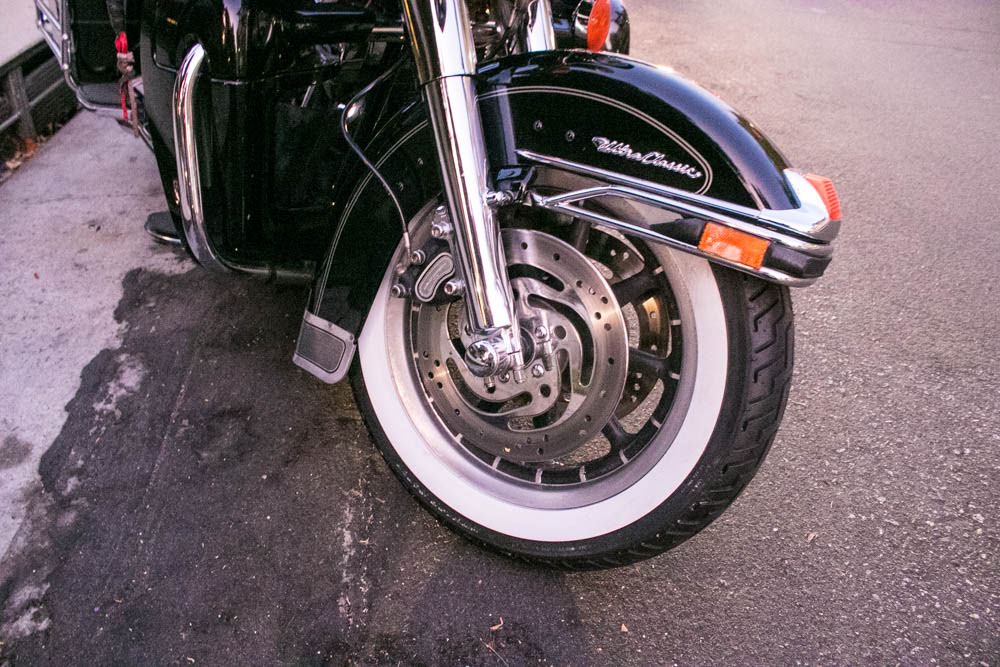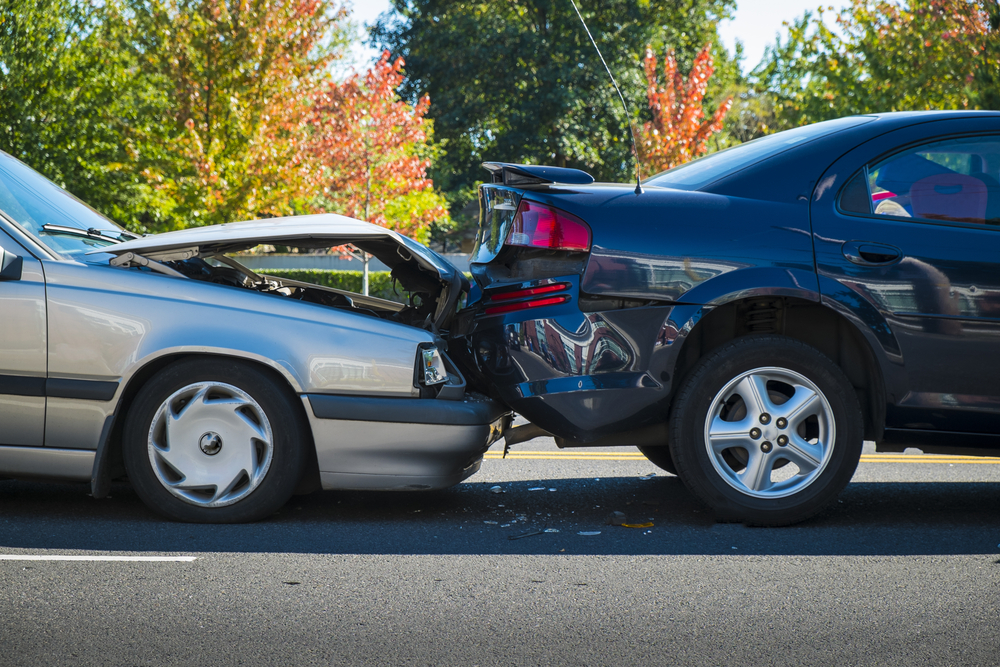The Dangers of Left-Turn Accidents for Motorcyclists

Written by Matthew Weidinger

Left-turn accidents are a leading cause of motorcyclist injuries and fatalities. These crashes often occur because drivers fail to see motorcycles or misjudge their speed when turning left at intersections. The risk lies in the limited visibility and slower reaction times, which put motorcyclists at a significant disadvantage.
Motorcyclists face unique dangers because their smaller size makes them harder to spot compared to cars. When a vehicle turns left without noticing an oncoming motorcycle, the chances of a collision increase drastically. Understanding these risks is essential for both riders and drivers to prevent accidents.
Understanding Left-Turn Accidents Involving Motorcyclists
Left-turn accidents often result from specific driver behaviors, road design factors, and visibility issues. Statistical data reveals the frequency and severity of these collisions, emphasizing the need for awareness among all road users.
Common Causes of Left-Turn Accidents
The primary cause of left-turn accidents involving motorcyclists is driver failure to yield. Drivers often do not see motorcycles when making a left turn, mistaking their speed or distance. This is largely due to motorcycles’ smaller size and reduced visibility in blind spots.
Other factors include misjudgment of the motorcyclist’s speed and inattentiveness, especially at intersections without dedicated left-turn signals. Poor lighting, weather conditions, and complex intersections can worsen the risks.
Motorcyclists turning left also face risks from oncoming vehicles making illegal or sudden turns. Understanding these behaviors is crucial for reducing accidents.
Statistical Overview of Motorcycle Left-Turn Collisions
Studies show left-turn crashes account for about 20-30% of all motorcycle accidents at intersections. Motorcyclists are disproportionately injured or killed in these crashes compared to car occupants in similar situations.
Data from traffic safety agencies indicates that more than 50% of motorcycle fatalities involve either the motorcyclist or another driver making a left turn. The lack of conspicuous motorcycle presence heightens the danger.
Crash statistics highlight that intersections with left-turn movements pose consistent hazards, requiring both drivers and motorcyclists to remain vigilant and follow traffic rules strictly.
Risks and Consequences for Motorcyclists
Left-turn accidents pose specific dangers to motorcyclists, often leading to severe physical harm and lasting effects. The injuries sustained can vary widely, but many share common patterns due to the nature of collisions with turning vehicles. Victims often face significant challenges both immediately and over time.
Typical Injuries and Fatalities
Motorcyclists involved in left-turn accidents frequently suffer traumatic injuries, such as fractures to the limbs and ribs. Head injuries, including concussions and traumatic brain injuries, are common, especially when helmets are not properly worn.
Spinal cord injuries also occur, potentially causing paralysis. Internal organ damage is possible from the blunt force impact of the collision. Unfortunately, these accidents have a high fatality rate, as motorcyclists lack the protective structure of cars. Common injury types include:
- Bone fractures
- Traumatic brain injury
- Spinal cord damage
- Internal bleeding
Immediate and Long-Term Impact on Victims
The immediate consequences often include emergency surgery and extended hospital stays. Pain and limited mobility frequently follow, affecting daily activities. Psychological effects, such as post-traumatic stress disorder (PTSD), may also develop from the trauma of the crash.
Long-term results can involve permanent disability and loss of income. Rehabilitation may require months or years, and some victims never fully recover their prior level of functioning. The financial burden from medical bills and lost wages can further complicate recovery.
Legal Responsibilities and Protection
Drivers have specific legal duties when making left turns to prevent collisions, especially with motorcyclists. Understanding liability and the role of legal advice is crucial for those involved in these accidents.
Driver Liability in Left-Turn Collisions
Drivers making left turns must yield the right-of-way to oncoming traffic, including motorcycles. Failure to do so often results in the driver being held legally responsible for any resulting accident. Liability depends on the driver’s adherence to traffic signals, speed limits, and attentiveness to oncoming vehicles. Documentation such as traffic camera footage or witness statements heavily influences fault determination.
Insurance companies typically hold the turning driver liable unless the motorcyclist has clearly violated traffic laws. Drivers should exercise caution and observe all intersection rules to mitigate legal risks.
Legal Guidance for Personal Injury Claims
Motorcyclists injured in left-turn accidents benefit from consulting experienced personal injury attorneys. Legal professionals help evaluate the strength of a claim based on evidence and local traffic laws.
Attorneys guide clients in gathering medical records, accident reports, and witness accounts, which are essential for negotiating fair settlements or pursuing court action.
Legal counsel also ensures that the injured parties understand their rights, including compensation for medical expenses, lost wages, and pain and suffering. This support is critical to navigating complex insurance and legal systems.

Prevention and Post-Accident Support for Motorcyclists
Reducing the risk of left-turn accidents requires specific safety actions tailored to motorcyclists. After a crash, timely legal and medical support plays a vital role in recovery and securing rights.
Proactive Safety Measures
Motorcyclists should focus on increasing their visibility to drivers who may turn left. Techniques include wearing bright or reflective clothing and using headlights during the day. Positioning oneself within the lane to be more visible, especially at intersections, helps prevent your unnoticed presence. Riders should also anticipate left-turning vehicles and be prepared to brake or swerve safely.
Maintaining a defensive riding style and reducing speed near intersections allows more reaction time. Utilizing mirrors and frequent head checks enhances awareness of surrounding traffic behavior.
How Smith & Weidinger PLLC Can Help After a Crash
Smith & Weidinger PLLC specializes in assisting motorcyclists in Denver after collisions. We provide immediate legal counsel to protect clients’ rights and guide them through insurance claims.
Our team gathers evidence, negotiates with insurers, and pursues compensation for medical bills, lost wages, and pain and suffering. We understand specific challenges motorcyclists face in left-turn accidents.
Our clients benefit from personalized support focused on maximizing recovery outcomes. Smith & Weidinger PLLC also connects clients to medical and rehabilitation services, ensuring both legal and physical recovery are managed effectively.
Note: The information provided in this blog post has been compiled from publicly available and secondary sources. While we strive for accuracy, some details may become outdated or contain inadvertent errors. If you believe any information is incorrect or requires updating, please contact Smith & Weidinger so that we may review and make the appropriate corrections.
Disclaimer: This blog post is for informational purposes only and is not intended as a solicitation for business. The photo used is not from the scene of the incident described. Viewing this content does not create an attorney-client relationship with Smith & Weidinger. If you have been injured in an accident, please seek immediate medical attention and then consult with a qualified attorney to discuss your legal rights and options.










